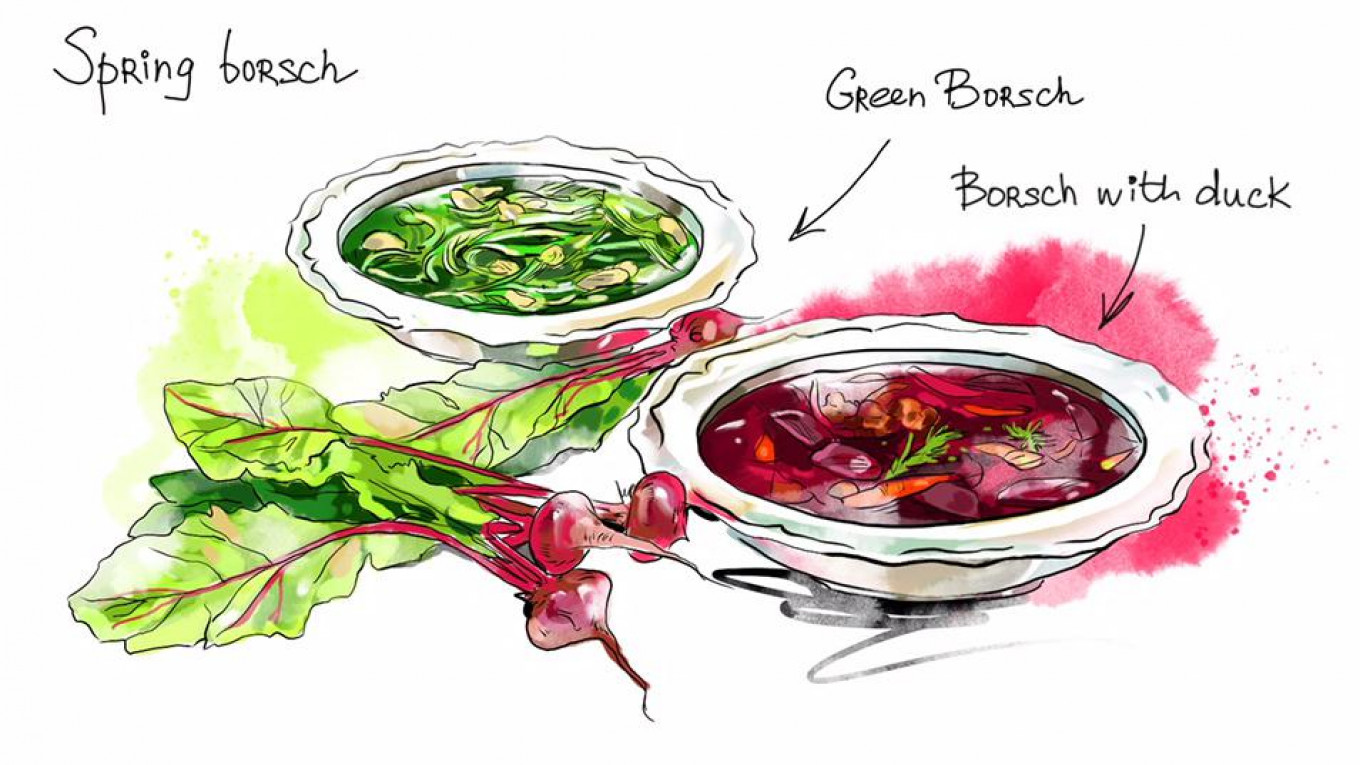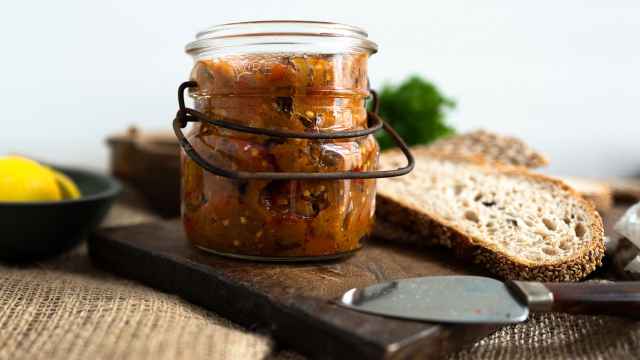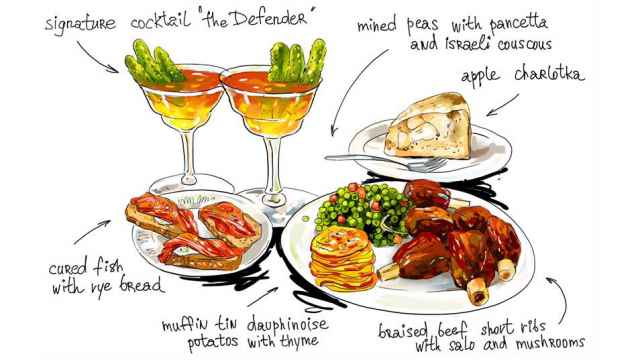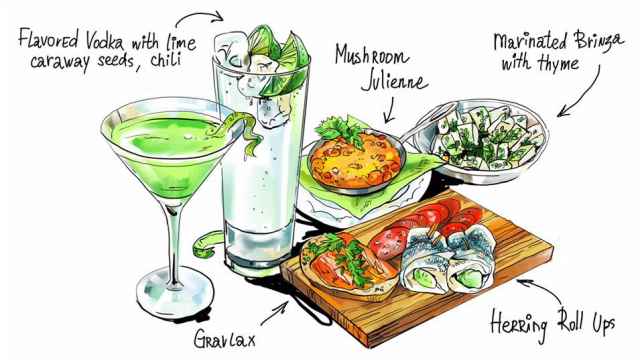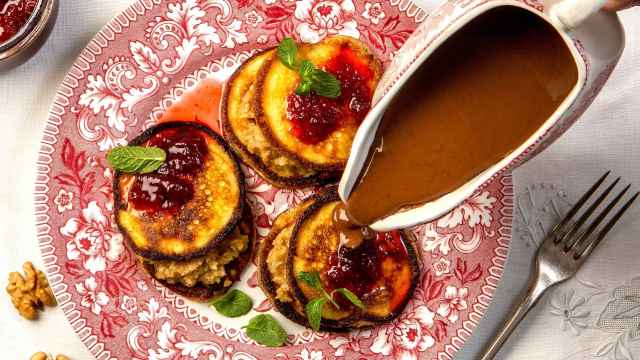If you relish cooking what’s in season, spring is the happiest time! Nothing beats the optimistic, upbeat tone of the farmer's markets in May when winter is firmly behind us, and each day sees the reappearance of half-forgotten friends such as young beets, fresh sorrel, and the parade of seasonal berries. Then there are those fleeting ingredients such as rhubarb that are doubly welcome because their time is so short.
With all this springtime bounty, it’s the perfect time to enjoy a pot of spring borshch.
The precise origins of borshch are lost in the mists of time and the fluctuating borders of Eastern Europe. Each Slavic nation claims ownership and revels in its own interpretation. Thank goodness for Nikolai Burlakoff’s exhaustive and authoritative work, "The World of Russian Borshch," which contains a staggering 77 different recipes for borshch as well as a comprehensive historical guide. Burlakoff traces the beet from Byzantium to the lands of Rus sometime around the tenth century, giving credence to the theory that borshch is more Ukrainian than Russian. But after that, borshch myth and lore splinters into a million different versions. My favorite is a charming legend that borshch was honed by Don Cossacks, foraging during the sixteenth century Siege of Azov. I love the idea of Cossacks riding at full gallop, leaning in their stirrups to spear up a bunch of beets with their razor-sharp sabers. Since Cossacks are back in fashion, we'll stick with this one.
When people try to pin me down on an exact borshch recipe, I become very uncomfortable. For every pot, there is a different borshch, and no two pots are the same. Some schools of thought insist that the essential ingredient is beets, those impossibly sweet vegetables that give borshch its signature pink color, but “shav’” the Jewish sorrel soup is also considered part of the borshch family. Does borshch need meat? My Russian mother-in-law certainly thinks so, though my American vegan nieces beg to differ. Should borshch be served ice cold, as they do in New York delis, or piping hot as is customary in Eastern Europe, with a garnish of hard-boiled eggs and sour cream? Which spices augment the flavor of borshch best? Apple, horseradish, or maybe both? And then there is the texture issue: do you grate the vegetables or dice them? And where do you stand on the beans versus potato question?
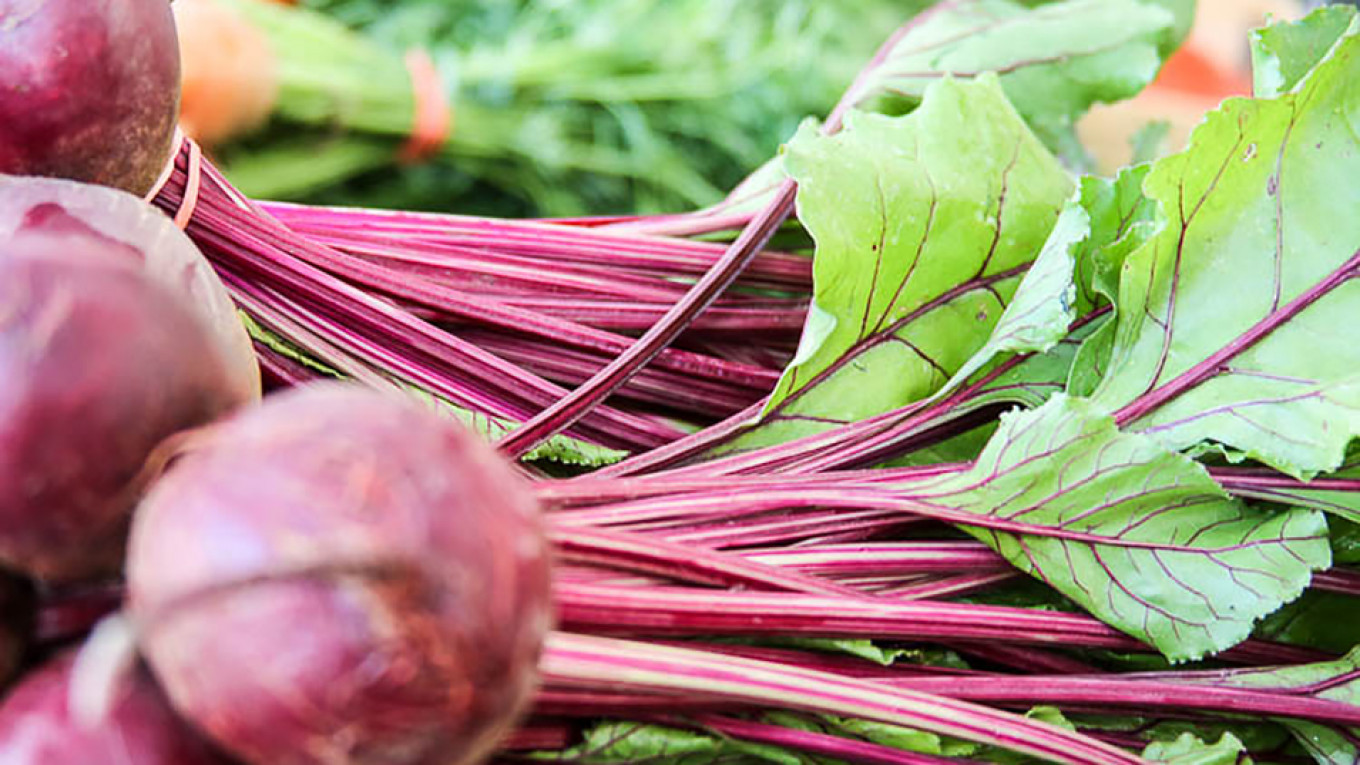
The truth is that anyone who tells you there is a carved-in-stone recipe for borshch is lying. If pressed, I offer a template on which you can endlessly riff (see the infographic below). It’s the ecumenical quality that I love best about borshch: in the depths of winter, borshch can be hearty, rich with broth and meat from a couple of lamb shanks, tomatoes, and onions with tartness from sauerkraut. In spring and summer, however, I go much lighter, and use lean duck breast as my meat. With tart and tasty greens such as sorrel, wild garlic, young beets with their colorful leaves, delicate pea shoots, and tender chives all in season, it’s a sin not to include these headliners. So give it a try. If you are new to borshch, don’t worry! There are no rights or wrongs here — just print off the infographic below, grab your basket and head to the farmers’ market to mix up a pot of your own. And be creative!
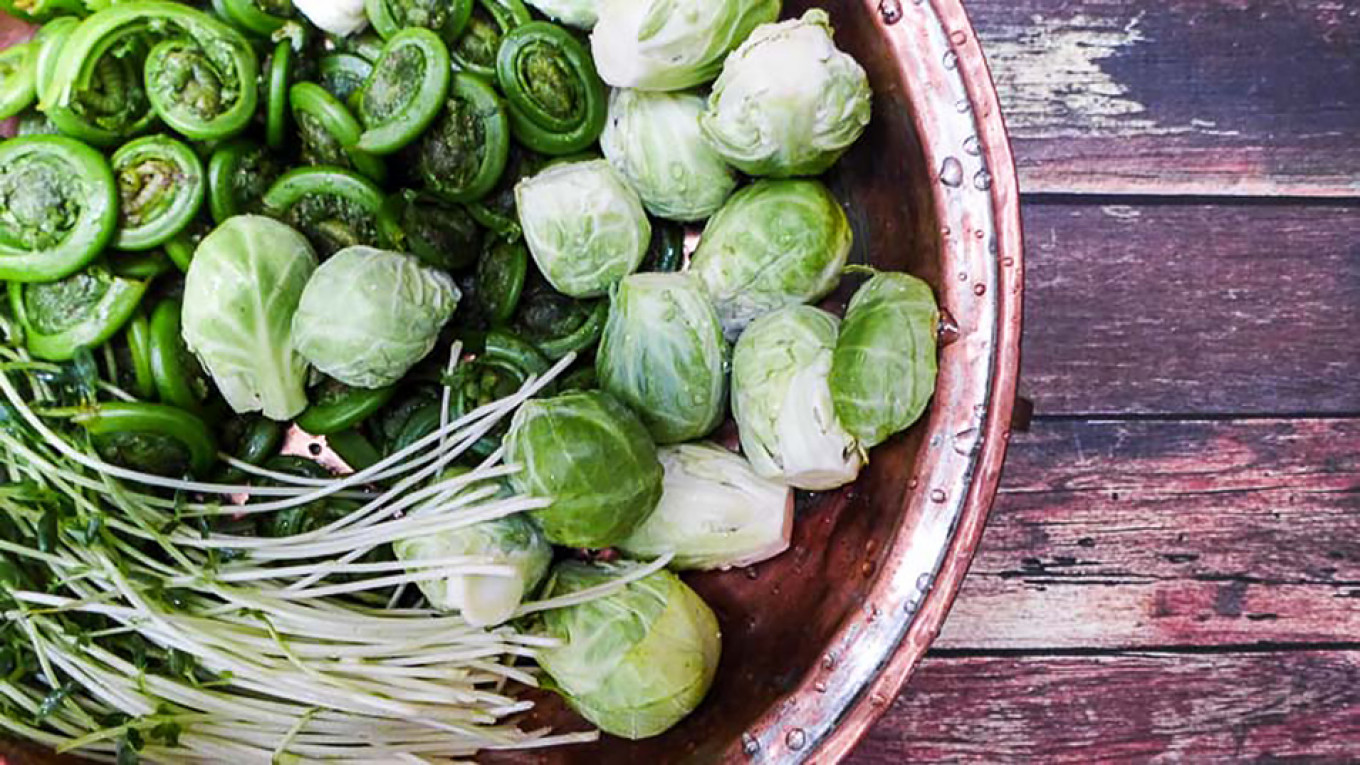
Spring Borshch with Young Beets & Duck
Ingredients:
- 2 quarts (2 liters) chicken or vegetable stock
- 2 boneless duck breasts
- 2 bunches young beets with stems and leaves
- 2 small parsnips, peeled and cubed
- 2 medium-sized carrots, peeled and cubed
- 2 sprigs fresh thyme
- 1 red pepper, cleaned and cubed
- 1 large leek, cleaned and cut into thin rounds (it’s fine to use the dark green parts of the leek)
- 2 Tbsp butter
- 2 bunches fresh sorrel, leaves removed from the stems and washed
- ¼-cup (60 ml) pomegranate syrup
- 3 Tbsp caraway seeds
- 2 Tbsp dill seed
- 2 Tbsp dried dill weed
- 2 cups (475 ml) sauerkraut with juice
- 8 cloves garlic, peeled and sliced very thin
- 1 knob fresh ginger, peeled and grated
- 2 bay leaves
Optional Ingredients:
- Pickled garlic
- Pickled green scallions
- Salt and pepper to taste
To garnish:
- 2-4 hard-boiled eggs, peeled and halved (quails’ eggs work really well here)
- Full fat sour cream
- Chopped fresh dill, parsley, and chives
Instructions:
Step 1: Prepare the vegetables
- Pre-heat the oven to 400 F (205 C).
- Cut the new beets from the stems, leaving about 1-2 cm of the stems. Wash the beets, scrubbing off any dirt. Set the stems aside. Wrap the beets in a sturdy tin foil pouch and place on a baking sheet lined with parchment paper. Roast for 15-20 minutes. While the beets are roasting, assemble the diced carrots, pepper, and parsnips. Toss with olive oil, salt, pepper, and 1 Tbsp of the caraway seeds. Add the fresh thyme and wrap loosely in a tin foil pouch as you did for the beets. Add this mixture to the baking sheet and roast for an additional 10 minutes.
- Remove the carrot mixture and set aside. Test the beets by inserting the tip of a small sharp knife into the largest of the beets. If it goes in smoothly, you are all set, if not, return them to the oven to cook for 10-15 minutes more. Size will determine how long you need to roast the beets: beets the size of tennis balls take about 40 minutes, while small young beets the size of ping-pong balls take half that time. Set the roasted beets aside until they are cool enough to handle.
Step 2: Prepare the duck
- My Moscow market sells lovely duck breasts without the skin, and so I go directly to the next phase of this recipe. If your duck breasts have skin on, render the fatty skin by doing the following: Score the surface of the fatty skin with a sharp knife in a crosshatch pattern, taking care not to cut into the flesh of the breast. Sear the breast, skin-side down in a hot, ovenproof skillet for 3 minutes. Reduce the heat and let the fat cook off for 10 more minutes until it is crisp and there is a great deal of liquid fat in the skillet.
- Salt and pepper the duck and put it in the 400 F (205 C) oven for 10 minutes. Remove to a plate lined with paper towel to cool. Reserve the duck fat for some other use. Shred or slice the duck to your desired size.
Step 3: Assemble the borshch
- Strip the leaves from the beet stems and wash and spin in a salad spinner to dislodge any grit. Shred or chiffonade the leaves into thin strips. Wash the stems thoroughly and cut into chunks the approximate length of the carrots and parsnips. Peel the roasted beets and dice into cubes the size of the other vegetables. Set aside.
- Melt the butter over medium heat in a heavy soup pot until bubbling. Add the leeks and garlic and sauté until they turn limp. Add the sorrel leaves and sprinkle with a generous pinch of salt and grind of pepper. Sauté until the sorrel turns dark green. Add the vegetables with the sprigs of fresh thyme and stir to combine, and then add the remaining caraway seeds, dill weed and seed. Toss together. If you want to include pickled vegetables, add them now.
- Add the stock and bring to a boil. Reduce the heat to a mild simmer. Add the beets leaves and stems, grated ginger, pomegranate syrup, and sauerkraut with its juices, and bay leaves. Cover and simmer for 40 minutes. Add the duck breast and warm through for 10-15 minutes.
Serve in shallow soup bowls, garnished liberally with sour cream, hard-boiled eggs and lots of fresh herbs.
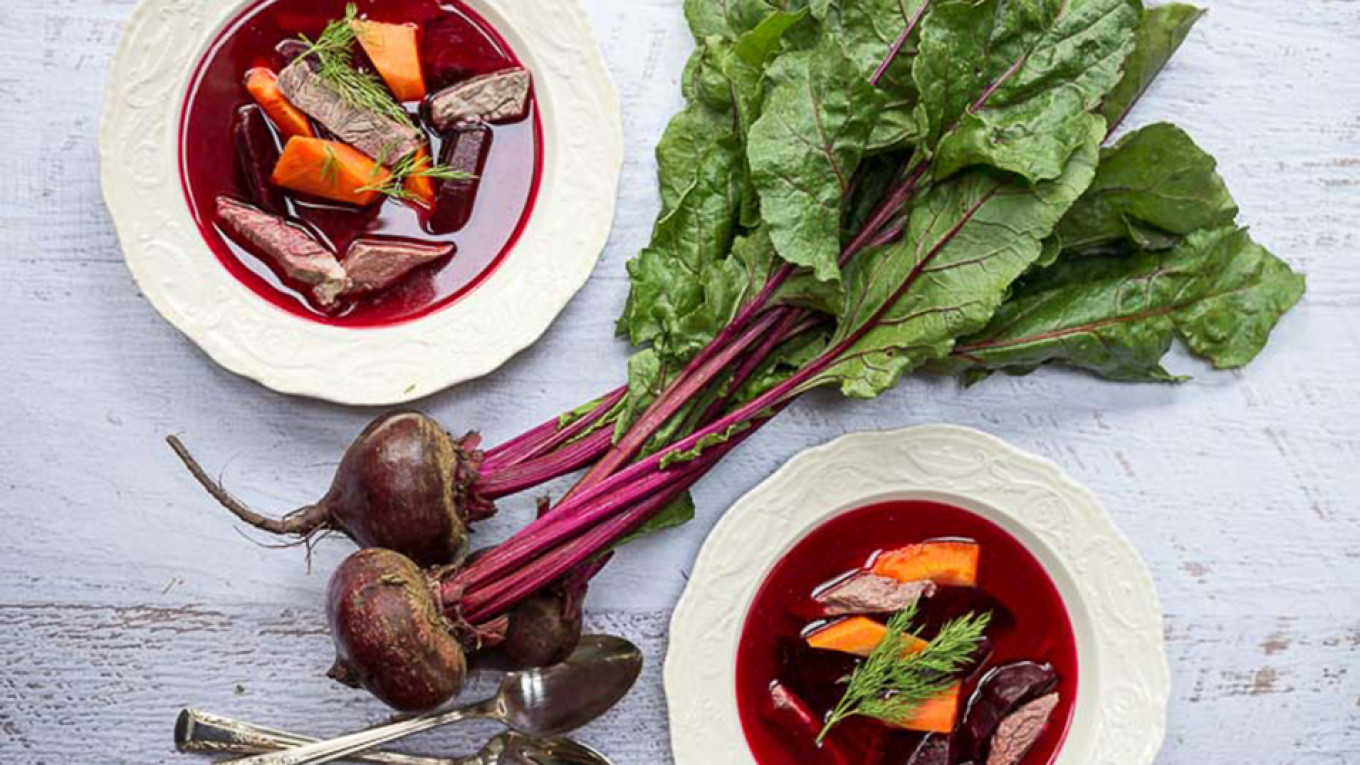
Borshch has traveled far and wide, brought with Jewish immigrants to North America, where it is often served iced cold with the ingredients combined into a kind of savory smoothie. Russian émigrés in the Far East incorporated ginger, chili peppers and other eastern spices that are natural enhancers of the sweetness of beets.
My own humble contribution to the borshch canon makes a very brief appearance each spring that I am in my native New England and the first glut of spring greens appear in the farmers’ markets. Fiddleheads and asparagus replace beets, while and ramps and garlic scapes add piquancy to this light, but very satisfying early summer soup.
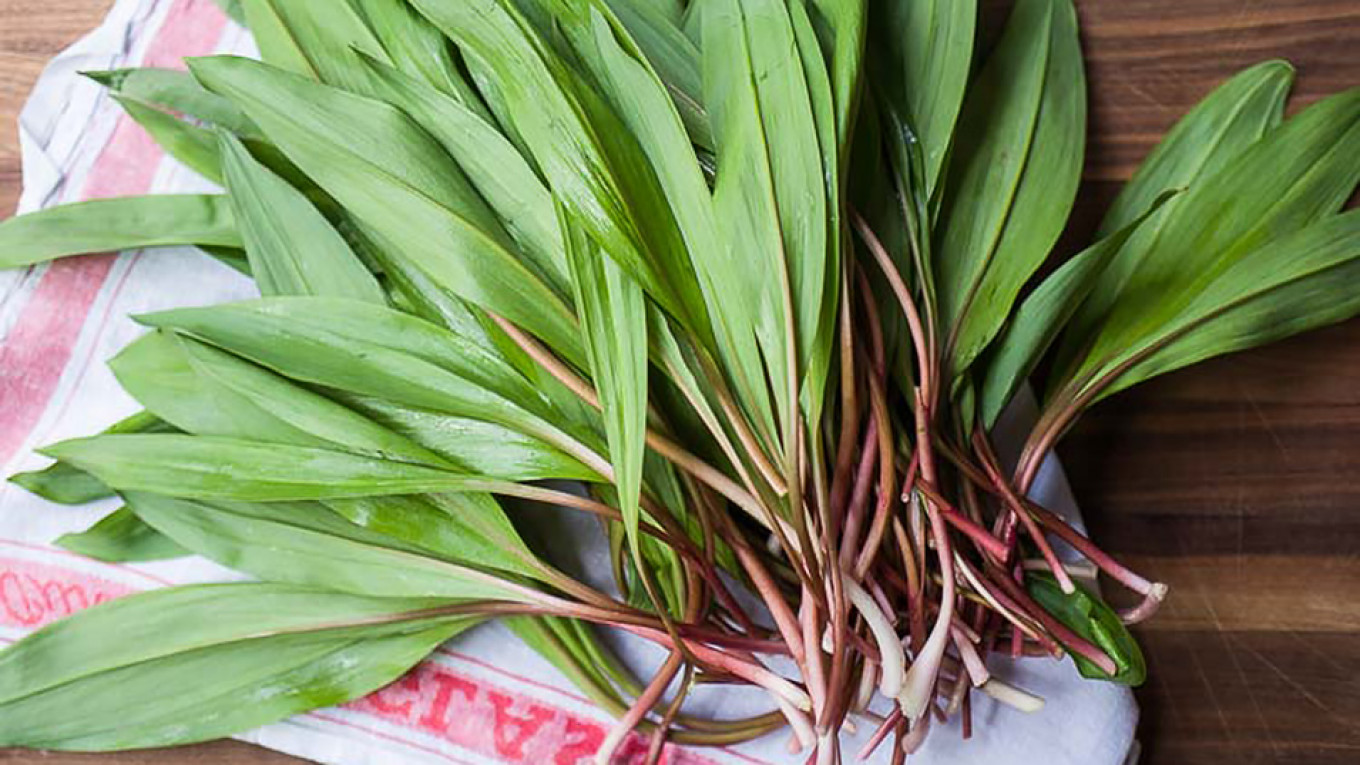
New England Borshch
Ingredients:
- 2 quarts (2 liters) vegetable or chicken stock
- A pinch cayenne pepper
- 2 Tbsp butter
- 2 shallots, peeled and finely minced
- 3 cups (700 ml) fresh fiddleheads*
- 2 bunches spring ramps (wild garlic)
- 4 stalks celery with leaves removed, cut in a small dice
- 4 cups (1 liter) Brussels sprouts, peeled and shredded
- 1 bunch fresh asparagus, peeled with woody ends snapped off
- 1 cup rasol (pickle juice)
- ½-cup (110 ml) pickled cocktail onions
- ½-cup (110 ml) fresh dill, chopped - reserve the stems
- ½-cup (100 ml) flat Italian parsley - reserve the stems
- Juice and zest of one fresh lemon
- Salt and pepper
Optional Ingredients:
This is a great vegetarian soup, but for those who like a little meat, the following additions add a nice extra flavor layer
1 pound (500grams) smoked ham, sliced into matchsticks (any smoked meat will do here, including bacon, pancetta, or garlic sausage.)
To garnish:
- Sour cream
- Chives
- Fresh pea shoots
An Important Note on Fiddleheads:
Fiddleheads are one of those fleeting vegetables that punctuate the spring in New England. They taste like a cross between asparagus and broccoli and are delightful on their own or in a dish such as this. However, they must be cooked, or they are poisonous. To cook fiddleheads, bring a large pot of salted water to a rolling boil. While the water is boiling, rinse the fiddleheads thoroughly in cold water, removing their slippery, papery coverings. Plunge the fiddleheads into the boiling water and cook for 3 minutes. Drain and rinse again with cold water.
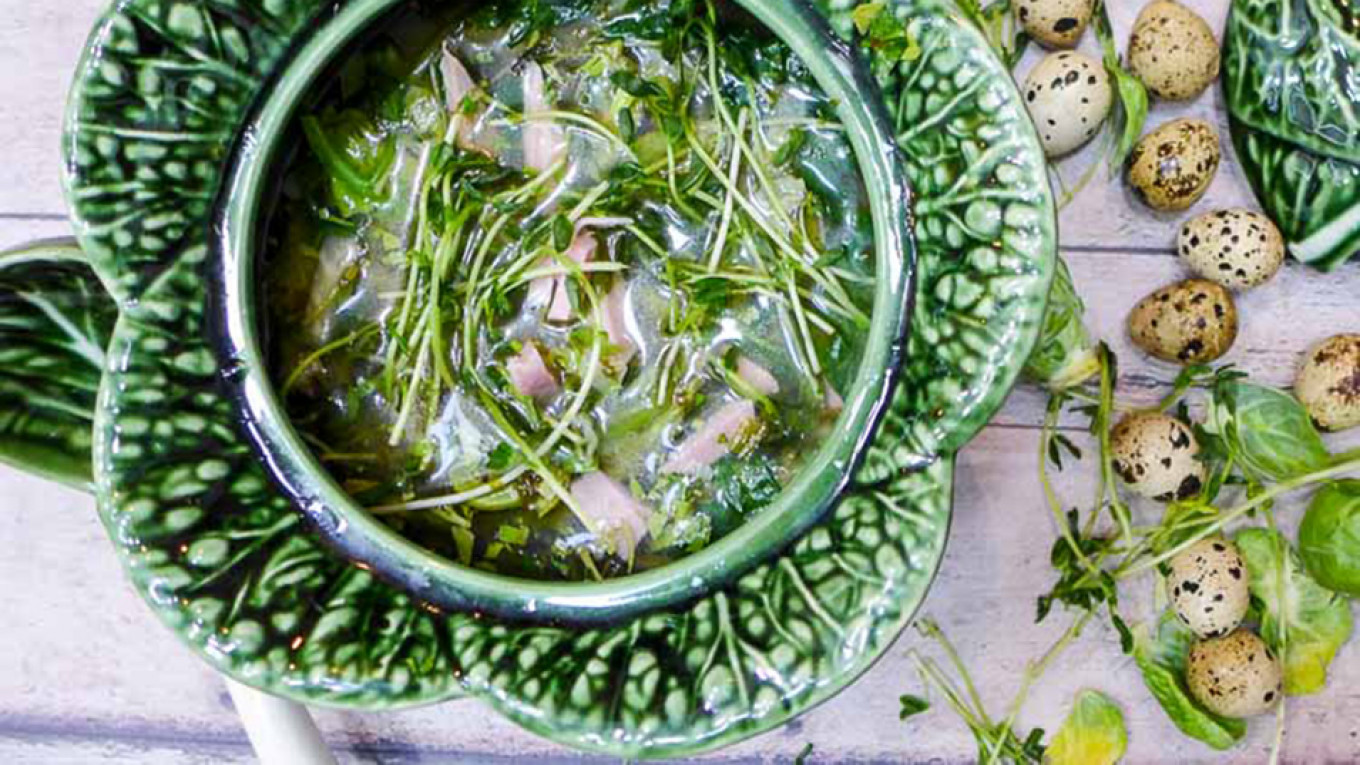
Instructions:
Step 1: Prepare the broth
- Remove the asparagus tips from the peeled stems. Chop the stems into small coins and place them in a large soup pot with the stock, lemon zest, parsley and dill stems, a generous pinch of salt, and a pinch of cayenne pepper.
- Simmer for 30 minutes, drain, then set aside. This can be done in advance.
Step 2: Prepare the vegetables
- Prepare the fiddleheads according to instructions above.
- Prepare the ramps by removing the bulbous end from the leaves. Slice the leaves into a chiffonade. Reserve both.
Step 3: Assemble the borshch
- Heat the butter in a heavy-bottomed soup pot until bubbling. Add the minced shallots and sweat until they are limp. Add the ramp bulbs and sauté for two minutes. Add celery stalks and sauté for two more minutes. Then add the washed and blanched fiddleheads and sauté for 5 minutes.
- Pour the stock into the pot and bring to a rolling boil. Add the sliced ham (is using), cocktail onions, rasol, shredded Brussels sprouts, and ramp leaves. Lower the heat, and simmer covered for 25 minutes. Add the asparagus tips and simmer for five minutes.
- Just before you are ready to serve, add the fresh lemon juice, celery leaves, and chopped parsley and dill. Garnish with sour cream, fresh chives, and young pea shoots.
One final piece of borshch wisdom: a pot of borshch will always taste better the day after it is made, and better still on each subsequent day. So make a lot.
Jennifer Eremeeva is a long-time expatriate. She writes about Russian history, culture, and cuisine at jennifereremeeva.com
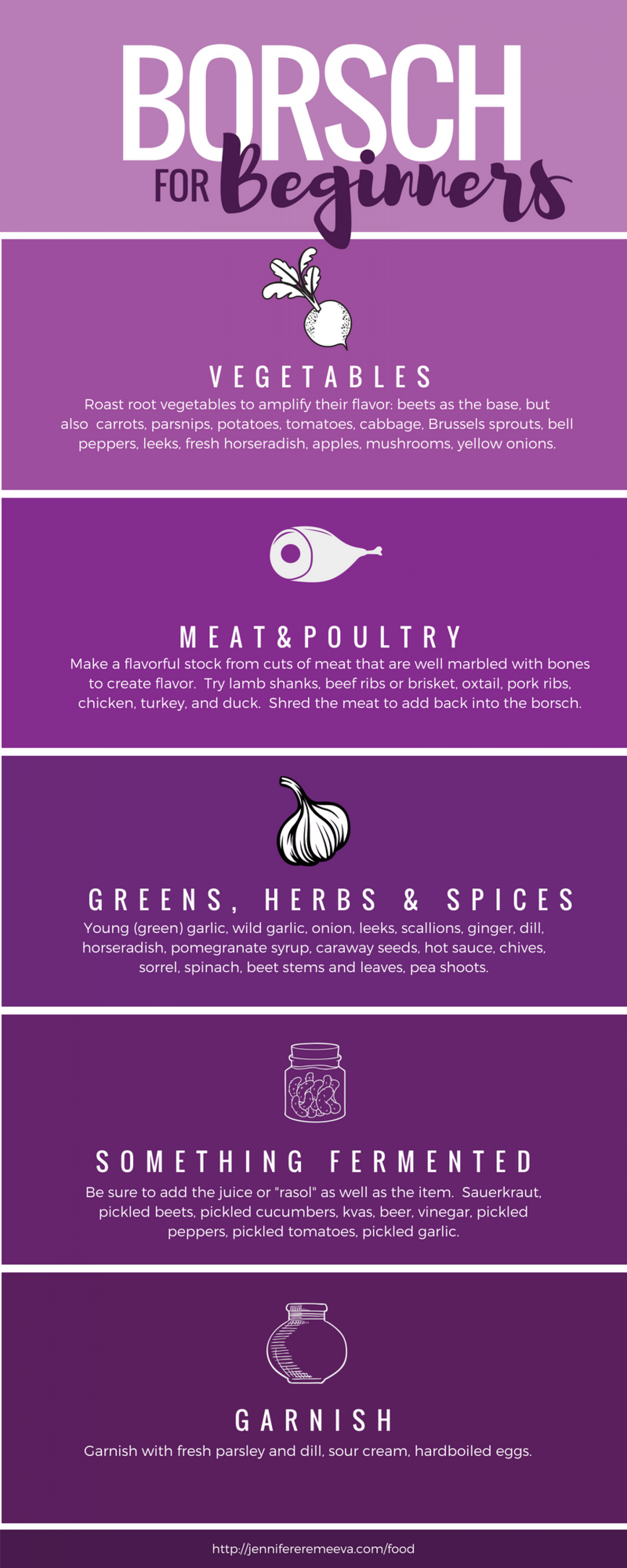
A Message from The Moscow Times:
Dear readers,
We are facing unprecedented challenges. Russia's Prosecutor General's Office has designated The Moscow Times as an "undesirable" organization, criminalizing our work and putting our staff at risk of prosecution. This follows our earlier unjust labeling as a "foreign agent."
These actions are direct attempts to silence independent journalism in Russia. The authorities claim our work "discredits the decisions of the Russian leadership." We see things differently: we strive to provide accurate, unbiased reporting on Russia.
We, the journalists of The Moscow Times, refuse to be silenced. But to continue our work, we need your help.
Your support, no matter how small, makes a world of difference. If you can, please support us monthly starting from just $2. It's quick to set up, and every contribution makes a significant impact.
By supporting The Moscow Times, you're defending open, independent journalism in the face of repression. Thank you for standing with us.
Remind me later.



